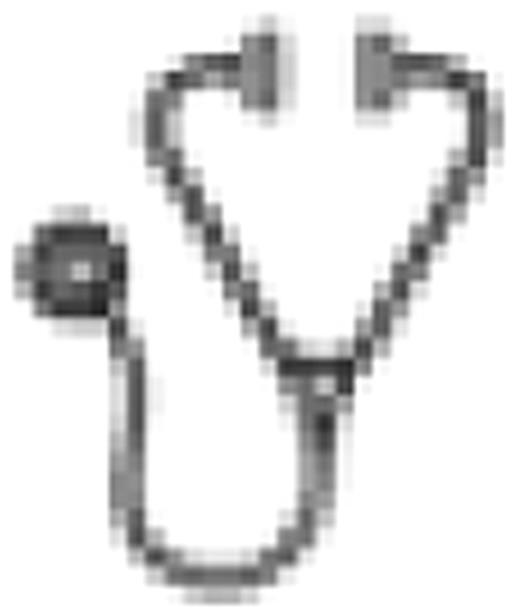Abstract
Abstract 3523
A high graft failure rate and treatment-related mortality (TRM) have historically been major pitfalls of myeloablative adult umbilical cord blood (UCB) transplantation. The goal of this prospective clinical trial was to identify an approach that addresses both of these problems. There is compelling evidence that increasing cell dose with the use of two partially matched UCB grafts reduces the graft failure rate. While non-myeloablative preparative regimens reduce TRM, this comes at the cost of an increased risk of disease relapse. Therefore, there is continued clinical need for myeloablative conditioning regimens that exert potent antitumor activity and provide sufficient immunosuppression to facilitate engraftment of mismatched unrelated UCB grafts. The combination of total body irradiation (TBI) (1320cGy)/fludarabine (Flu)/cyclophosphamide (Cy) has been studied extensively by other groups. In this trial, we hypothesized that elimination of Cy would improve tolerability yet maintain comparable anti-tumor effects and engraftment potential.
The conditioning regimen consisted of TBI 1350cGy and Flu 40mg/m2 × 4 days. Two cord blood units at least HLA 4/6 matched with the recipient (low resolution class I and high resolution class II), with a minimum cryopreserved cell dose of 1.5 × 106/kg were selected for transplantation. Tacrolimus and mycophenolate mofetil were used for graft-versus-host disease (GVHD) prophylaxis and G-CSF was administered until the neutrophil count exceeded 1000/mm3. Disease-free and overall survival was estimated using the Kaplan-Meier method. In the analysis of cumulative incidence of neutrophil and platelet engraftment, a competing event was defined as relapse or death without an event of interest, whereas in the analysis of relapse and acute and chronic GVHD, a competing event was defined as death without an event of interest. Relapse was defined as a competing risk in the analysis of TRM. The Wilcoxon signed rank test was used to evaluate the effect of cell dose on the sustained engraftment of a single cord unit.
27 patients from 2 centers (Duke-24, UBC-3) with a median age of 33 (range, 20–58) years with hematologic malignancies were enrolled on the trial. Fifteen had AML (CR1-1 and CR2-14), five had ALL (CR1-2 and 2CR–3), three had MDS, one had CML, and three had NHL. The median combined total nucleated cell dose was 4.3 (range, 3.2–7.7) × 107/kg. The cumulative incidence of neutrophil engraftment (≥500/μl) was 80% (95% confidence interval (CI), 58–91%), with a median of 24 (range, 13–45) days. The cumulative incidences of platelet engraftment ≥20,000 and ≥50,000/μl was 76% (95% CI, 54–88%) and 68% (95% CI, 46–83%), respectively, and a median day of platelet engraftment ≥50,000/μl was 52 (range, 33–78). A single cord blood unit represented ≥79% of hematopoiesis by day 100. Higher cryopreserved and infused total nucleated cell dose and infused CD3+ cell dose were significant factors associated with the predominant UCB unit (P = 0.032, 0.020, and 0.042, respectively). Three patients experienced graft failure, and hematopoiesis was restored in two patients with either autologous or haploidentical hematopoietic stem cells. The cumulative incidences of grades II–IV and grades III–IV acute GVHD were 37% (95%CI, 20–55%) and 11% (95% CI, 3–26%), respectively and that of chronic GVHD was 31% (95% CI, 15–49%). With a median follow-up period of 23 months, the overall and disease-free survival rates at 2 years were 58% (95% CI, 34–75%) and 52% (95% CI, 29–70%), respectively. The 180 day and 2-year incidence of TRM was 19% (95% CI, 7–35%) and 28% (95% CI, 12–47%), respectively. The relapse rate at 2 years was 20% (95% CI, 7–37%). As an indicator of tolerability of this modified myeloablative regimen, we observed a cumulative incidence of total parental nutrition usage of just 56%.
In conclusion, we find that the modified myeloablative regimen of TBI (1350cGy)/fludarabine provides dual cord blood engraftment rates comparable to more conventional myeloablative regimens. In contrast to other reports, we found that graft size predicts for the predominant UCB unit. This study supports the use of TBI 1350cGy/fludarabine as an alternative to conventional myeloablative conditioning for dual UCB transplantation and provides justification for larger studies.
Off Label Use: Fludarabine; used as part of the stem cell transplant conditioning regimen. Chao:Genzyme: Research Funding. Horwitz:Genzyme: Honoraria, Research Funding.

This icon denotes a clinically relevant abstract
Author notes
Asterisk with author names denotes non-ASH members.

This feature is available to Subscribers Only
Sign In or Create an Account Close Modal